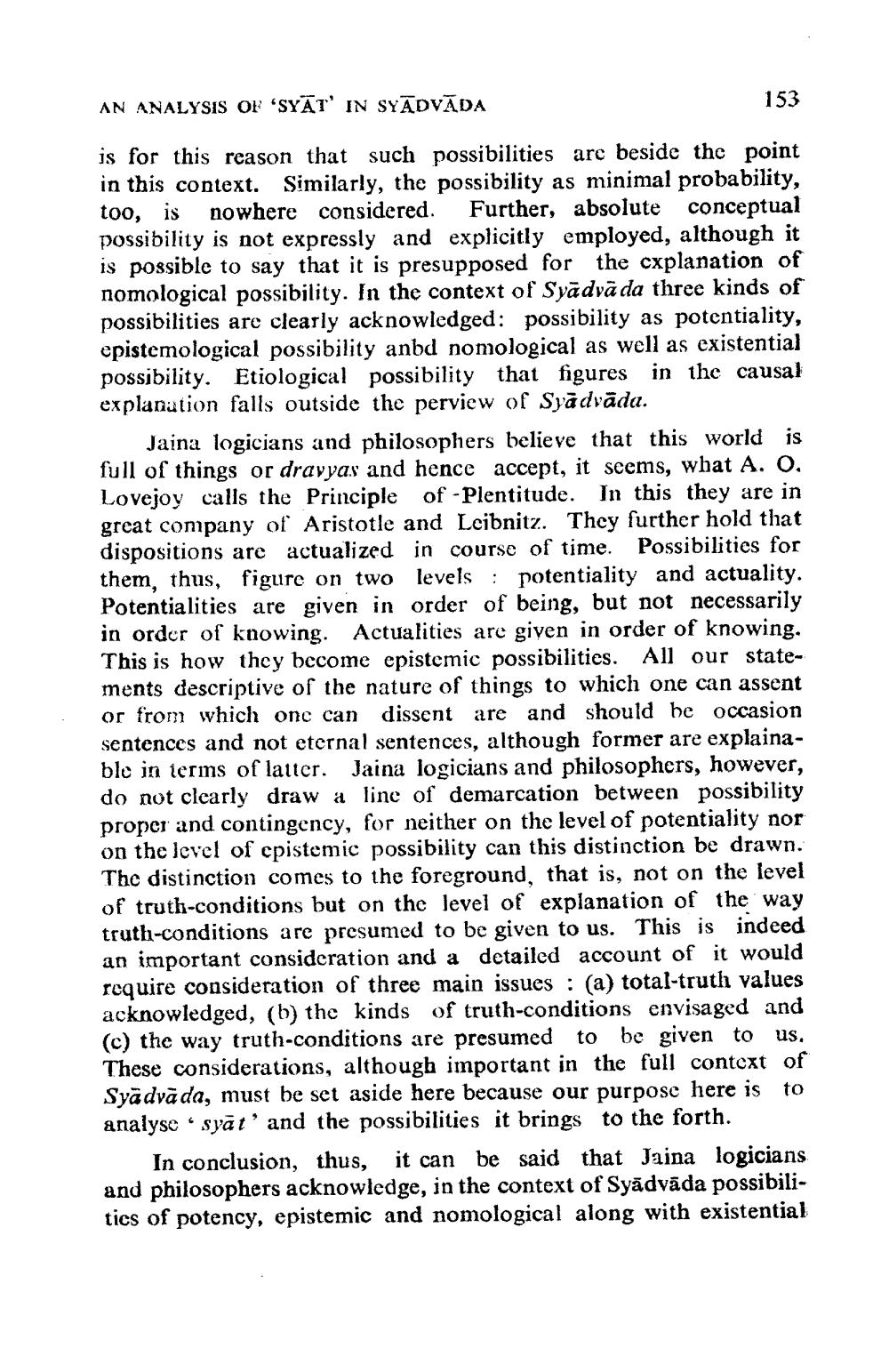________________
AN ANALYSIS OF 'SYĀT' IN SYĀDVĀDA
153
is for this reason that such possibilities are beside the point in this context. Similarly, the possibility as minimal probability, too, is nowhere considered. Further, absolute conceptual possibility is not expressly and explicitly employed, although it is possible to say that it is presupposed for the cxplanation of nomological possibility. In the context of Syādvā da three kinds of possibilities are clearly acknowledged: possibility as potentiality, epistemological possibility anbd nomological as well as existential possibility. Etiological possibility that figures in the causal explanation falls outside the perview of Syādvāda.
Jaina logicians and philosophers believe that this world is full of things or dravyas and hence accept, it seems, what A. O. Lovejoy calls the Principle of - Plentitude. In this they are in great company of Aristotle and Leibnitz. They further hold that dispositions are actualized in course of time. Possibilities for them, thus, figure on two levels : potentiality and actuality. Potentialities are given in order of being, but not necessarily in order of knowing. Actualities are given in order of kno This is how they become epistemic possibilities. All our statements descriptive of the nature of things to which one can assent or from which one can dissent are and should be occasion sentences and not eternal sentences, although former are explainable in terms of latter. Jaina logicians and philosophers, however, do not clearly draw a line of demarcation between possibility proper and contingency, for neither on the level of potentiality nor on the level of cpistemic possibility can this distinction be drawn. The distinction comes to the foreground, that is, not on the level of truth-conditions but on the level of explanation of the way truth-conditions are presumed to be given to us. This is indeed an important consideration and a detailed account of it would require consideration of three main issues : (a) total-truth values acknowledged, (b) the kinds of truth-conditions envisaged and (c) the way truth-conditions are presumed to be given to us. These considerations, although important in the full context of Syädvā da, must be set aside here because our purpose here is to analyse - syāt' and the possibilities it brings to the forth.
In conclusion, thus, it can be said that Jaina logicians and philosophers acknowledge, in the context of Syādvāda possibilities of potency, epistemic and nomological along with existential




